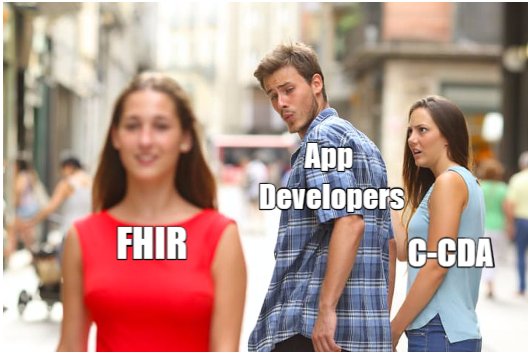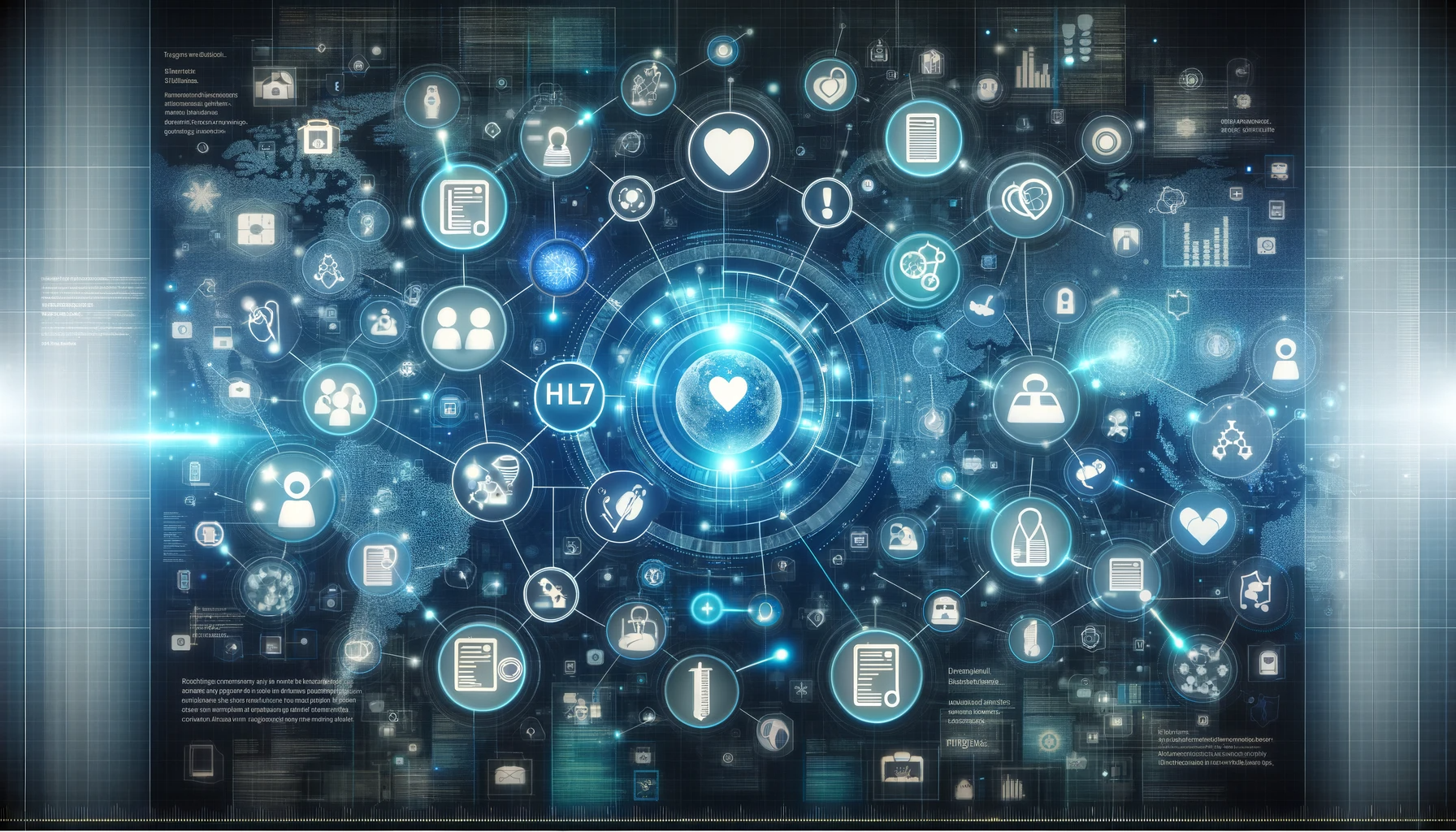December 15, 2023
A Short Guide To HL7 Format
Introduction
Health Level 7 (or HL7) is a set of international standards for the exchange, integration, sharing, and retrieval of electronic health information.
The HL7 standard plays a crucial role in facilitating communication between healthcare systems, ensuring that patient data is accurately and securely transferred across diverse applications.
In this short guide, we will explore the key aspects of HL7, its structure, standards, and its significance in the healthcare industry.
Understanding HL7:
Established in 1987, HL7 has undergone substantial evolution, culminating in different versions, with HL7 Version 2.x and Version 3 emerging as the most widely adopted.
The HL7 Development Framework, anchored in the Reference Information Model (RIM), serves as the cornerstone, providing a structured foundation for the standard. This framework, encompassing the RIM, guides the development and implementation of HL7, ensuring a systematic and interoperable approach to exchanging electronic health information.

HL7 Version 2.x:
In HL7 Version 2.x, messages have a structured layout with segments, fields, and components.
Understanding these parts is crucial for seeing how information is organized and transmitted.
HL7 messages also have different types like ADT (Admit, Discharge, Transfer), ORM (Order Message), and ORU (Observation Result), each playing a specific role in healthcare communication.
This variety improves the detailed and specialized sharing of healthcare data through HL7.
HL7 Version 3:
Unlike Version 2.x, HL7 Version 3 uses a more flexible and robust approach for sharing healthcare information. It adopts an object-oriented model, making data exchange adaptable and scalable.
Additionally, it introduces the Clinical Document Architecture (CDA), a standard for sharing clinical documents that enhances interoperability among different healthcare systems. This shows HL7 Version 3’s commitment to creating a versatile and comprehensive model for exchanging healthcare information.
HL7 and Interoperability:
By exploring the benefits of HL7 in healthcare, such as improved efficiency, reduced errors, and enhanced patient care, we gain insights into its positive impact on healthcare systems.
Additionally, the discussion extends to addressing common challenges encountered in HL7 implementation, accompanied by proposed solutions to ensure the smooth and seamless interoperability of healthcare information.
Through this dual exploration, we gain a comprehensive understanding of HL7’s role in fostering efficient communication and integration within the complex landscape of healthcare systems.
HL7 Implementation:
Implementing Health Level 7 standards is important in healthcare to improve how different computer systems share patient information. HL7, especially its newest version, helps organize and send health data, like patient admissions or lab results, between systems.
It’s important to correctly match a hospital’s data with the HL7 format, often using special software called interface engines.
Another key part is using HL7 FHIR, a newer system that makes sharing health information easier and faster with modern web technology. Successful use of HL7 requires IT experts and healthcare staff to understand and apply these standards correctly in their work. This helps make healthcare more efficient and improves patient care.
HL7 in the Future:
AI is being leveraged to analyze vast amounts of healthcare data more efficiently, enabling predictive analytics and personalized patient care. Blockchain, on the other hand, offers a secure and transparent method for managing health records, enhancing data integrity and patient privacy.
Alongside these technological advancements, the global adoption of HL7 is rapidly expanding.
Countries around the world are embracing HL7 standards, recognizing their critical role in standardizing the exchange of healthcare information. This worldwide adoption not only facilitates better data sharing across borders but also paves the way for a more unified global healthcare system, where patient care and medical research benefit from seamless, accurate, and efficient information exchange.
HL7 Security and Privacy Considerations:
HL7 protocols are designed to ensure that patient information is exchanged securely and confidentially between systems. This involves implementing robust authentication and authorization measures to control access to health data, ensuring that only authorized personnel can view or modify patient information.
Encryption is another critical aspect, protecting data during transmission to prevent unauthorized interception. HL7 also supports audit trails, which record who accessed patient data and what changes were made, adding an extra layer of accountability.
Overall, security and privacy in HL7 are about balancing the need for efficient data exchange with the imperative to protect patient information from breaches and unauthorized access.
HL7 Integration in Electronic Health Records (EHRs):
Health Level 7 plays a crucial role in Electronic Health Records interoperability, bridging the gap between different EHR systems to ensure a comprehensive and unified view of patient records.
This integration is key to providing coordinated and efficient patient care, as it eliminates data silos and ensures that healthcare professionals have a complete, up-to-date patient history at their fingertips.
Moreover, HL7 aligns closely with the Meaningful Use criteria, a set of standards defined to promote the adoption of certified EHR technology. By adhering to these criteria, HL7 contributes to the improvement of healthcare outcomes. It enables the efficient exchange of health information, supports better clinical decision-making, and enhances patient engagement by providing easier access to their health records.
HL7 and Medical Imaging:
Integrating Health Level 7 with the Digital Imaging and Communications in Medicine (DICOM) standard is a big step forward in medical care. This combination allows doctors to easily access and share medical images like X-rays and MRIs, along with other patient health records.
DICOM handles the medical images, while HL7 helps integrate these images with a patient’s overall health information. This makes it easier for healthcare providers to see a complete picture of a patient’s health.
HL7 Imaging Integration Profiles are also important because they set the rules for how different healthcare systems can exchange and use these medical images effectively. These profiles ensure that medical images are shared securely and consistently, helping doctors make better-informed decisions for their patients.
HL7 Messaging in Real-time Healthcare:
Health Level 7 plays a crucial role in real-time patient monitoring and emergency care. It allows healthcare providers to get instant updates on important health measures like heart rate and blood pressure. This is especially important for patients in critical condition, as it helps doctors respond quickly to any changes.
In emergency departments, HL7 helps speed up communication. It ensures patient information is shared quickly and efficiently among the medical team. This quick sharing of data is vital in emergencies, where every second matters. It helps the emergency staff make faster decisions and provide better care quickly.
HL7 and Regulatory Compliance:
HL7 plays a vital role in ensuring the secure and private exchange of healthcare information, aligning closely with major regulations like the HIPAA in the U.S. and the GDPR in the European Union.
HL7’s framework is designed to meet the stringent requirements of HIPAA, which focuses on protecting patient data privacy and securing electronic medical records. Similarly, it follows GDPR standards, which govern the handling and privacy of personal data, including health information.
This compliance ensures that healthcare information exchanged via HL7 is both secure and respects patient confidentiality. Beyond these, HL7 also aligns with various international standards and regulations, underlining its commitment to contribute to global interoperability. By complying with these diverse regulations, HL7 ensures a uniform standard of data exchange, enhancing the quality of healthcare delivery worldwide while safeguarding patient privacy and data security.
HL7 Implementation Challenges and Best Practices:
In integrating different healthcare systems with Health Level 7, it’s important to tackle challenges in data mapping and transformation.
Data mapping means making sure that information from various healthcare systems matches the HL7 format. This can be tricky because each system might have its own way of recording and storing data. Transforming this data to fit HL7 standards requires careful work to keep the information accurate.
Equally important is the process of testing and validating these HL7 systems. This involves checking that the data mapping is done correctly and that the data shared through HL7 is accurate and reliable. Validation ensures that the HL7 system meets all the necessary requirements and works well in real situations. This thorough testing and validation are key to making sure patient information is handled correctly, leading to better care and smoother healthcare operations.
HL7 and Patient Engagement:
Health Level 7 significantly enhances patient engagement by facilitating access to health information, which fosters transparency and aids in informed decision-making.
Through HL7 standards, patients can securely access their medical records, lab results, and treatment histories, empowering them to take an active role in their healthcare journey. This access not only promotes transparency between patients and healthcare providers but also enables patients to make more informed choices about their care and treatments.
Additionally, HL7 plays a pivotal role in integrating mobile health (mHealth) applications. By interfacing with various mHealth apps, HL7 extends the reach of healthcare services beyond traditional clinical settings. Patients can use these apps to monitor their health, communicate with healthcare providers, and access medical information on the go.
This integration is particularly beneficial in managing chronic conditions, where continuous monitoring and regular communication with healthcare professionals are crucial. Hence, HL7’s role in patient access to health information and mHealth integration marks a significant stride towards more engaged, informed, and connected healthcare experiences.
Conclusion
To summarize, Health Level 7 is a crucial set of international standards for exchanging healthcare information electronically. It plays a vital role in ensuring that different healthcare systems can communicate with each other effectively, which is essential for coordinated patient care.
HL7 covers various aspects of healthcare data, including patient records, billing information, and medical images. It helps in real-time patient monitoring, streamlines communication in emergency departments, and supports patient engagement by providing access to health information.
HL7 also aligns with important privacy and security regulations like HIPAA and GDPR, ensuring that patient data is handled securely. To foster its effective use, there are numerous training programs and a strong community for knowledge sharing and support, enhancing efficiency, ensuring data accuracy, and improving patient outcomes.

